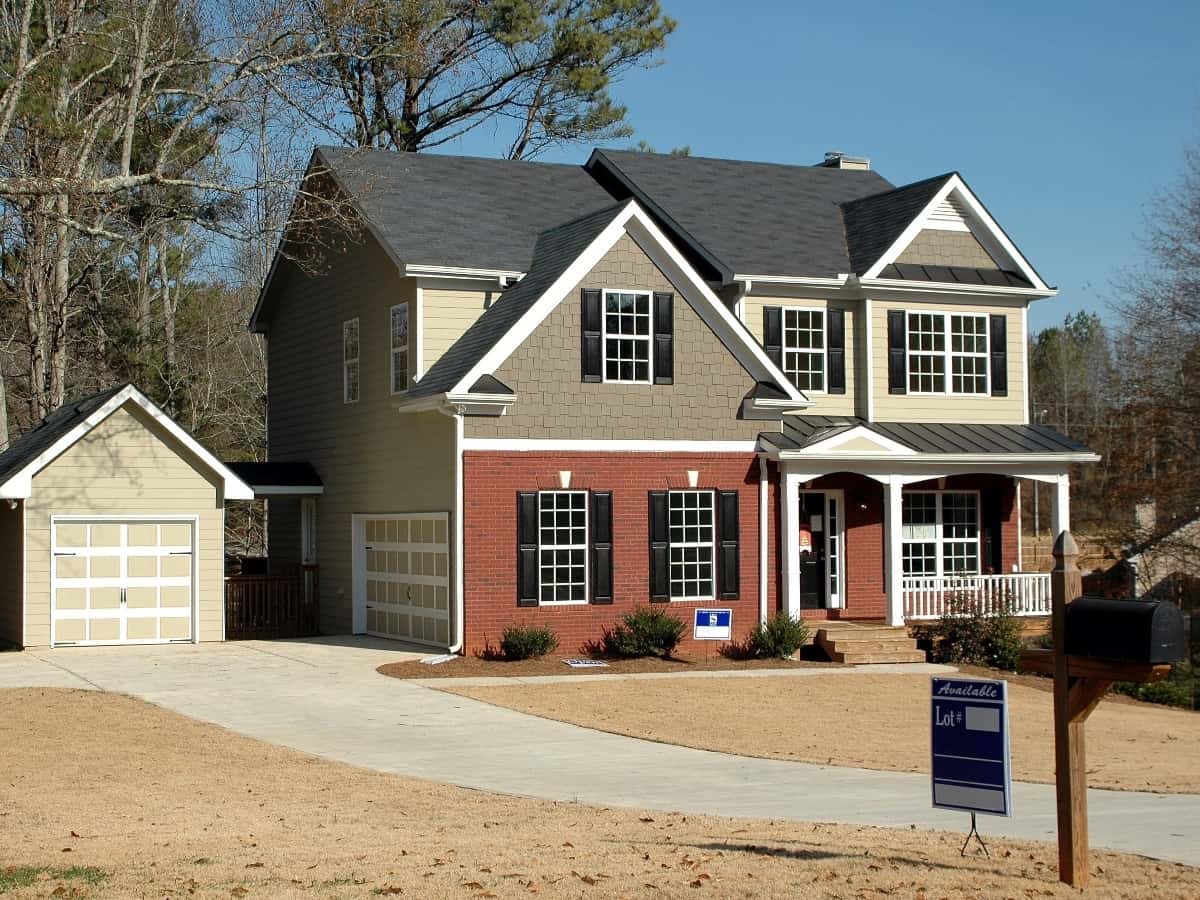For many people, having a home is a dream come true, but understanding mortgage insurance usually leads to the question, what does mortgage insurance cover? Getting mortgage insurance is simply one of the many procedures that most homeowners must take to become homeowners.
You’ve come to the perfect place if you’re thinking about buying a property and aren’t sure where to begin. We’ll go over what a loan is, what mortgage insurance is, what does mortgage insurance cover, whether you need it and whether it’s refundable.
What is a Mortgage
A mortgage is a loan type that you used to acquire a home or for home refinancing. Mortgages allow you to buy a home without having to pay in total upfront.
Who Qualifies For a Mortgage?
The majority of people who purchase a home do so with the help of a mortgage. If you can’t afford to pay for a property outright, you’ll need a mortgage.
There are several instances where having a mortgage on your house makes sense, even if you have the funds to pay it off. Mortgages, for example, are frequently used by investors to free up capital for other assets.
You must meet specific eligibility standards to be eligible for the loan. As a result, a person who qualifies for a mortgage will most likely have a steady and consistent income, a debt-to-income ratio of less than 50%, and a good credit score (at least 580 for FHA loans or 620 for conventional loans).
The standard down payment aim for a home is 20% of the buying price, but this is out of reach for many purchasers.

What is a Downpayment?
A down payment is a quantity of money paid by a buyer at the purchasing process for an expensive item or service. The down payment is only a part of the full buying price. Therefore, the buyer will most likely need to take out a loan to cover the rest.
The home buyer may pay 5% to 25% of the entire cost of the home upfront. Then, the remainder covered by a mortgage from a bank or other financial institution.
How Can Mortgage Insurance Help?
Mortgage insurance allows you to put down a significantly smaller down payment on a property and still qualify for a loan, but what does mortgage insurance cover? What it does is safeguard the lender if you default on the loan.
If you put less than 20% down on a conventional mortgage (one that isn’t guaranteed or insured by the federal government), a lender will need you to pay private mortgage insurance or PMI.
For FHA Loans
You’ll need mortgage insurance with an FHA loan, which is backed by the United States Federal Housing Administration, regardless of the amount of the down payment.
For VA & USDA Loans
You won’t need mortgage insurance for USDA and VA mortgages, backed by the United States Department of Agriculture and the United States Department of Veterans Affairs, respectively.
They do, however, charge fees to safeguard lenders if borrowers default. As a result, in exchange for the low down payment requirement, you’ll still have to pay a premium with these house loans.

What Does Mortgage Insurance Cover and How Does it Work?
You pay for mortgage insurance, yet it protects the lender. Mortgage insurance reimburses the lender for a portion of the principal if you default on your payments. Meanwhile, if you can’t pay, you’re still responsible for the loan, and if you fall too far behind, you could lose your home to foreclosure.
Mortgage life insurance, which pays off the remaining mortgage if the borrower dies, and mortgage disability insurance, which pays off the mortgage if the borrower becomes disabled, are two distinct types of insurance.
PMI vs. MIP
Depending on the type of house loan, mortgage insurance works a little differently. For conventional and government-backed mortgages, here’s what you need to know.
For typical mortgages, you’ll need private mortgage insurance (PMI). Many lenders provide traditional mortgages with modest down payments — as low as 3% in some cases. If your down payment is less than 20%, you will almost certainly be required to pay private mortgage insurance or PMI.
Estimating PMI Cost
You may use a PMI calculator before buying a home to estimate the cost of PMI, which will vary depending on the size of your home loan, your credit score, and other factors. The PMI cost usually includes in your monthly mortgage payment. When you have more than 20% equity in your house, you can request a PMI removal.
Premiums for FHA Mortgage Insurance (MIP)
FHA loans provide lower down payments and more specific credit requirements than conventional loans, with down payments as low as 3.5 percent. Regardless of the down payment level, most FHA home loans demand an upfront and annual mortgage insurance cost.
The upfront charge is 1.75 percent of the loan amount, and the yearly premium varies between 0.45 percent and 1.05 percent of the loan’s average outstanding balance for the year.
If you put down less than 10%, the annual mortgage insurance payment, or MIP, is paid in monthly installments for the duration of the FHA loan. If you put down more than 10%, you’ll have to pay MIP for 11 years.
Fee Charged by the USDA as a Guarantee
USDA loans are zero-down-payment loans for people who want to buy a house in the country. Some USDA loans have two fees: a one-time guarantee fee and an annual fee paid every year for the loan duration. The upfront guarantee charge for 2019 is 1% of the total loan amount.
The annual charge is 0.35 percent of the year’s average outstanding loan total, which is divided into monthly payments and included in your mortgage payment. Each fiscal year, the federal government examines the fees and has the authority to adjust them. However, the amount of your charge will not change; it will set when the loan closes.
Fee for VA funding
For active, disabled, or retired military service members, select National Guard members and reservists, and qualifying surviving spouses, VA mortgages demand no down payment and offer low-interest rates.
They don’t require mortgage insurance, but for purchase loans, most borrowers will pay a “funding charge” that ranges from 1.4 percent to 3.6 percent of the loan amount. The amount of your down payment determines the cost and whether this is your first VA loan.

Will You Need Mortgage Insurance If You Put Down More Than 20%?
You won’t have to pay mortgage insurance if you put down at least 20% or more of the purchase price. So what does mortgage insurance cover when you make a higher down payment? Even though your monthly mortgage payment will be higher if you have mortgage insurance., you begin with more equity, which protects you if your home’s value drops.
Is There a Need For Mortgage Insurance?
With a 20% down payment, new FHA loans need a 1.75 percent mortgage insurance payment up front and a 0.85 percent annual mortgage insurance premium.
How to Stay Away From Mortgage Insurance
Some state first-time homebuyer programs allow you to get a mortgage with a modest down payment and reduced mortgage insurance or none at all.
However, to avoid mortgage insurance, you’ll need to secure a traditional loan and pay down at least 20% on a home.
If that isn’t an option, factor in the cost of mortgage insurance, as well as VA or USDA fees. This should be done when determining how much house you can afford.
Is it Possible to Get PMI off FHA Loans?
When a typical mortgage achieves a loan-to-value ratio of 78 percent, mortgage insurance (PMI) is no longer required. The removal of FHA mortgage insurance, on the other hand, is a different situation.
FHA mortgage insurance premium (MIP) typically lasts 11 years or the life of the loan, depending on your down payment and when you first took out the loan. MIP will not disappear on its own. Once you hit 20% equity, you’ll need to refinance into a new mortgage program to get rid of it.
Meanwhile, if you have paid down your mortgage balance to 80% of the home’s original appraised value on a conventional loan, you can ask your lender to remove the mortgage insurance. If your loan balance falls below 78 percent, your mortgage servicer is required to cancel your mortgage insurance.
Is PMI a Refundable Expense?
When it comes to refundable mortgage insurance, there is a lot of information available. If you choose the refundable option at the time of origination and the mortgage insurance was financed at the time of origination and is canceled before its maturity, you may be entitled to a return.
If there were no refund/limited option, however, there would be no way to get a refund. The lender has 45 days to reimburse applicable premiums when the PMI ends.
Do You Get Your PMI Back When You Sell Your House, Though?
It’s a valid question, given that the new borrower will be responsible for mortgage insurance in the future. You won’t get back the premiums you paid and will, which is unfortunate for you, the seller.




